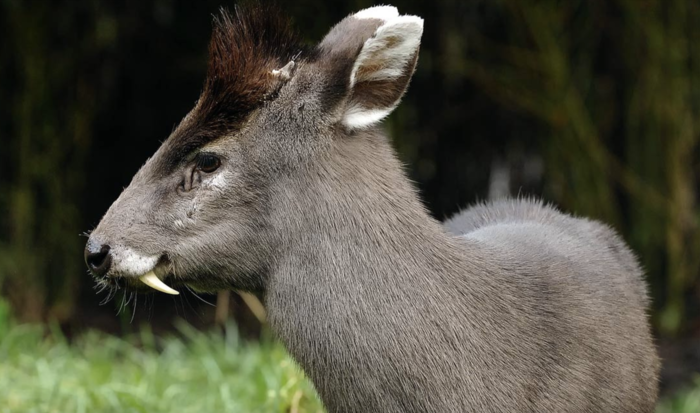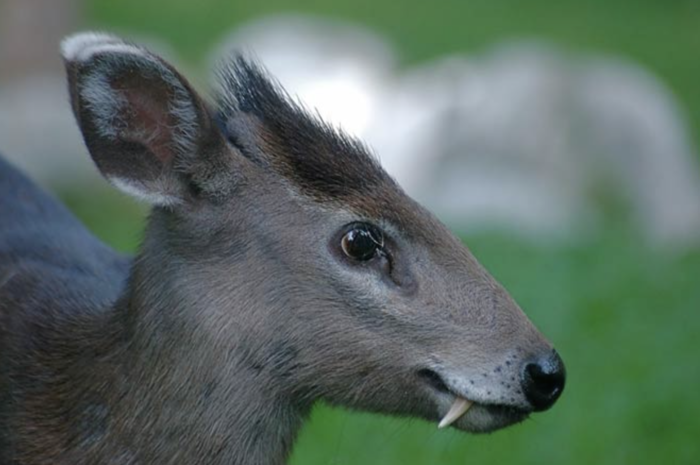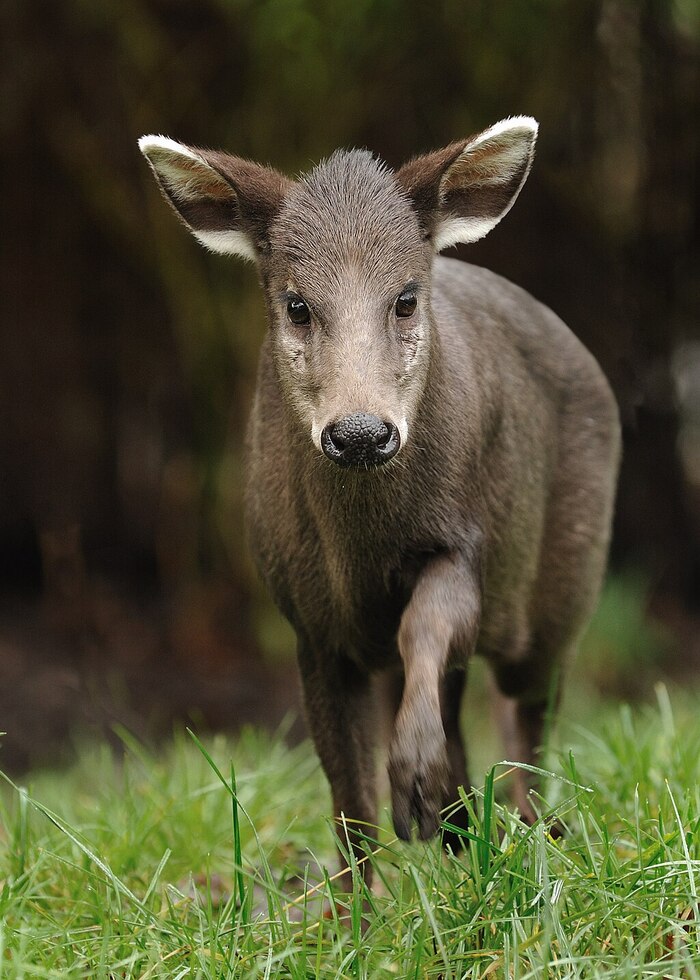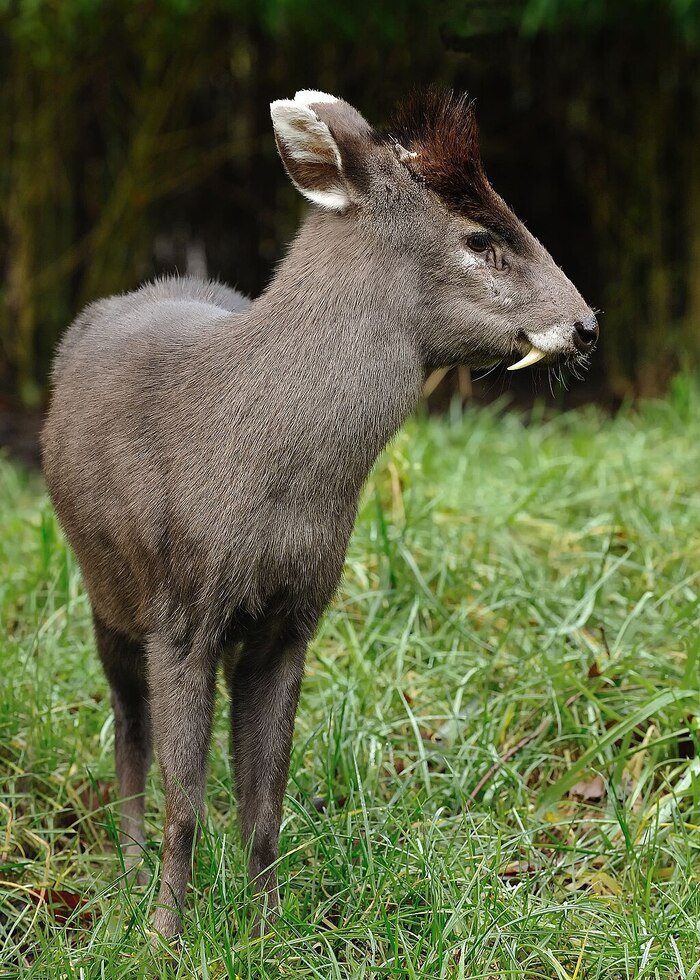The Mao Crowned Deer (Elaphodus cephalophus), also known as the Chinese Sika Deer, is an intriguing species of deer found in the dense forests and rugged terrains of China. Renowned for its unique appearance and behavior, the Mao Crowned Deer is both ecologically significant and critically endangered. This article delves into the scientific classification, morphology, distribution, habitat, behavior, threats, conservation efforts, and the importance of this species in biodiversity.
The Mao Crowned Deer belongs to the family Cervidae and is classified under the genus Elaphodus, which includes other species of deer. Its scientific name is Elaphodus cephalophus. The species was first described in the late 19th century and has since been a subject of scientific study due to its distinct features and its declining population.
Kingdom: Animalia
Phylum: Chordata
Class: Mammalia
Order: Artiodactyla
Family: Cervidae
Genus: Elaphodus
Species: Elaphodus cephalophus

The Mao Crowned Deer is a medium-sized deer, easily recognized by its distinctive crown-like mane. The coat is dense and typically ranges from reddish-brown to grey-brown with a paler underside. The mane, which is longer and thicker than the fur on the rest of its body, gives the species its name, “Mao Crowned Deer.” It is believed that this mane serves as a form of camouflage in the dense undergrowth of its habitat.
Body Length: 95–135 cm (37–53 inches)
Tail Length: 10–20 cm (4–8 inches)
Weight: 25–45 kg (55–99 lbs)
Height: 65–80 cm (26–31 inches) at the shoulder
Male Mao Crowned Deer typically develop antlers, which are branching and relatively small compared to other deer species. The antlers are shed annually and begin to regrow in the spring. Female Mao Crowned Deer do not grow antlers, as is typical for most deer species.
The average lifespan of the Mao Crowned Deer in the wild is about 10 to 15 years, depending on the environmental conditions and the level of human interference in their habitat.
The Mao Crowned Deer is endemic to China, where it is primarily found in the mountainous forests of the Sichuan, Gansu, and Hunan regions. They prefer temperate and subtropical forests, typically residing at altitudes ranging from 1,000 to 3,000 meters (3,280 to 9,840 feet). These areas provide dense vegetation that offers both food and cover from predators.
The Mao Crowned Deer prefers forests with dense undergrowth and deciduous trees, often in areas that are difficult for predators to navigate. The vegetation serves as both a source of food and protection, allowing the deer to remain hidden from larger predators.
The Mao Crowned Deer is an herbivore, feeding on a variety of plants, including leaves, fruits, berries, and grass. It forages primarily during the early morning and late afternoon, taking advantage of the cooler parts of the day. During the winter months, the diet may shift to include more woody plants and bark, especially when more delicate vegetation becomes scarce.
Unlike many other deer species, the Mao Crowned Deer tends to be solitary. Males and females usually live alone, coming together only during the mating season. However, in areas with abundant food, there have been instances of small groups forming. The deer communicates through scent marking, vocalizations, and body movements.
The breeding season for Mao Crowned Deer typically occurs in autumn, with males competing for the attention of females. Males will use their antlers to display dominance and will often engage in physical confrontations with other males. After mating, females give birth to one or two fawns, usually in the spring after a gestation period of around 240 days. The young are born with spotted coats, which help them blend into the environment.

The Mao Crowned Deer is currently listed as an Endangered species due to a declining population. The primary threats to its survival include habitat loss, fragmentation caused by human development, and hunting. Deforestation, land conversion for agriculture, and infrastructure projects have significantly reduced the deer's natural habitat. As the species is found in such restricted and specific regions, these threats have had a disproportionate impact on their numbers.
The International Union for Conservation of Nature (IUCN) has listed the Mao Crowned Deer as Endangered due to its small population size and the continuing threats it faces. In China, the species is protected by law, but illegal hunting and the destruction of habitats continue to pose significant risks to its survival.

To protect the Mao Crowned Deer, several protected areas and nature reserves have been established in China, particularly in regions like Sichuan and Gansu. These reserves aim to conserve the deer's natural habitat and reduce the impact of human activity.
Efforts to prevent poaching and illegal hunting are critical in protecting the Mao Crowned Deer. The Chinese government has implemented stricter wildlife protection laws and surveillance programs to monitor populations and protect the species from hunters. Additionally, conservation organizations are working to educate local communities about the importance of preserving the Mao Crowned Deer and its habitat.

The Mao Crowned Deer plays an important ecological role in its habitat by helping to control vegetation growth, thereby maintaining a healthy ecosystem. Its presence contributes to the biodiversity of temperate forest ecosystems and serves as a prey species for predators higher up the food chain.
The Mao Crowned Deer holds significance in Chinese culture as a symbol of strength and endurance. Its unique appearance and status as a rare species make it a subject of folklore and local myths in the regions where it resides.
Although the Mao Crowned Deer does not directly contribute to the economy through commercial use, it plays an indirect role in eco-tourism. Protected areas and nature reserves that house the deer attract tourists and wildlife enthusiasts who are interested in observing this endangered species in its natural environment.
Here is a comparison of the Mao Crowned Deer with other closely related species of deer:
| Species | Habitat | Size (Weight) | Antlers | Conservation Status |
|---|---|---|---|---|
| Mao Crowned Deer | China (temperate forests) | 25–45 kg | Small, branching | Endangered |
| Sika Deer | East Asia, Japan | 45–80 kg | Larger, branching | Least Concern |
| Chinese Water Deer | China, Korea | 15–30 kg | None | Near Threatened |
The Mao Crowned Deer (Elaphodus cephalophus) is a unique and endangered species that requires continued conservation efforts to ensure its survival. With its distinct mane, solitary behavior, and importance in maintaining ecological balance, this deer is an essential part of China's wildlife heritage. Protecting the Mao Crowned Deer is not only crucial for biodiversity but also for preserving the cultural and ecological health of its habitat.
animal tags: Cervidae
We created this article in conjunction with AI technology, then made sure it was fact-checked and edited by a Animals Top editor.